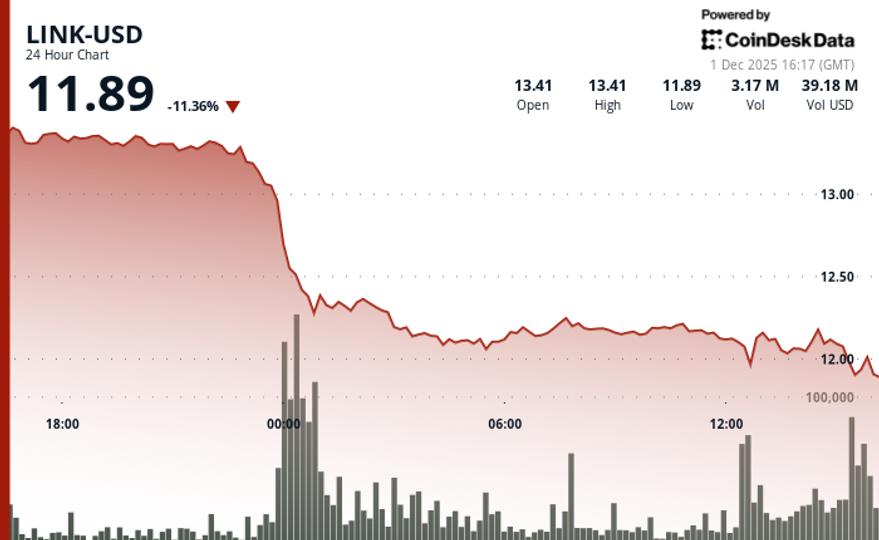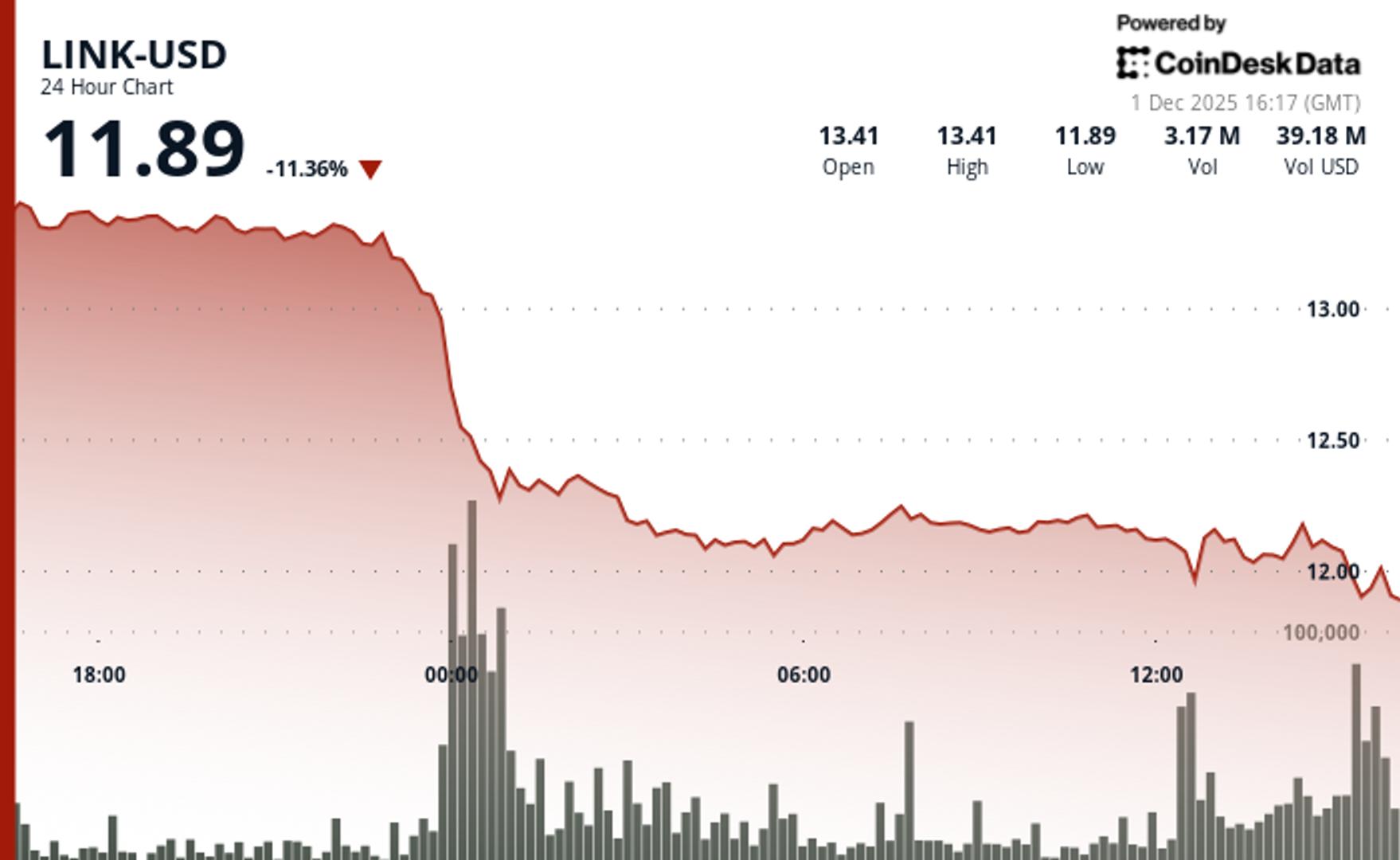CryptoCurrency
11% Drop as Crypto Sell-off Overshadows ETF Launch News


The native token of oracle network Chainlink broke below $12 on Monday as the broader crypto market pullback overwhelmed anticipation for the token’s U.S. spot ETF debut.
The LINK token tumbled more than 11% over the past 24 hours, with a bearish technical picture pointing to a breakdown, CoinDesk Research’s technical analysis tool noted.
The weakness came despite news that asset manager Grayscale is set to convert its closed-end LINK trust into an ETF structure. Well-followed ETF analyst Nate Geraci said the ETF could start trading this week on NYSE Arca.
Still, traders appeared more focused on the technical breakdown than the regulatory milestone. A spike in volume to 7.14 million LINK, roughly 280% above the daily average, pushed the token below the $13.00 support level, CoinDesk Research’s technical analysis tool noted. Prices slid to $11.94, establishing a bearish structure of successive lower highs and confirming downside pressure.
The weakness also mirrors broader risk sentiment in crypto, as bitcoin tumbled to near $84,000 in U.S. morning hours amid macro jitters and Bank of Japan rate hike speculation.
Key levels to watch:
- Support/Resistance: Immediate support now sits at $11.87 and resistance at $12.26, the prior breakdown point.
- Volume Analysis: 7.14M token volume marked a 280% spike above average, confirming institutional sell pressure.
- Chart Patterns: Break below descending trendline with an 11.7% drop across a $1.56 range.
- Targets and Risk: Further downside could target the $11.70–$11.80 zone, with November lows at $11.39 as the next level to watch.
Disclaimer: Parts of this article were generated with the assistance from AI tools and reviewed by our editorial team to ensure accuracy and adherence to our standards. For more information, see CoinDesk’s full AI Policy.










